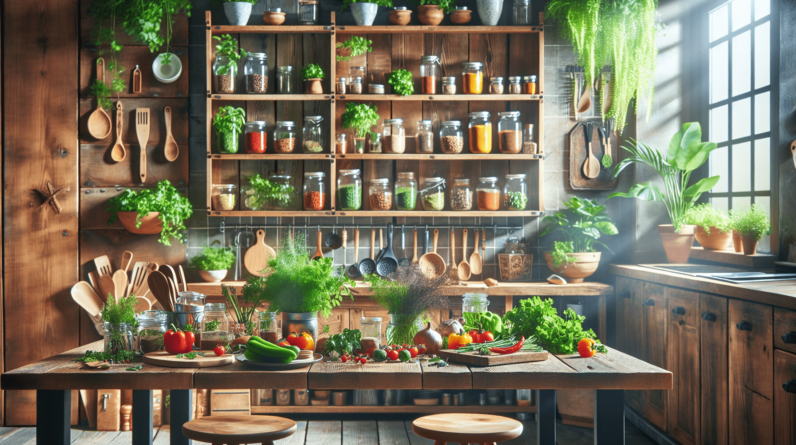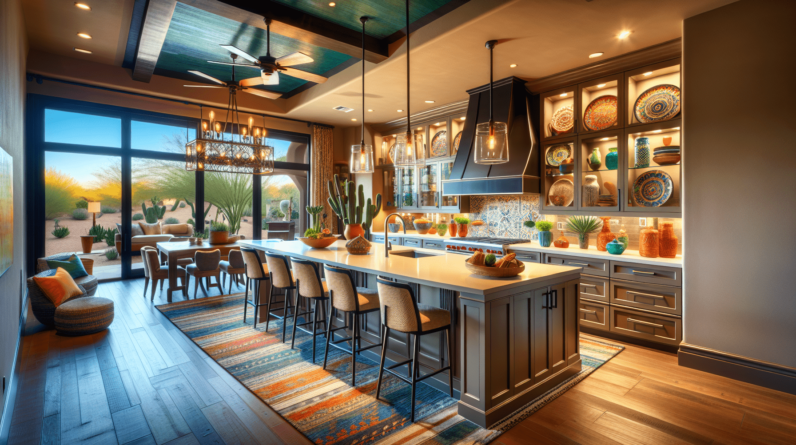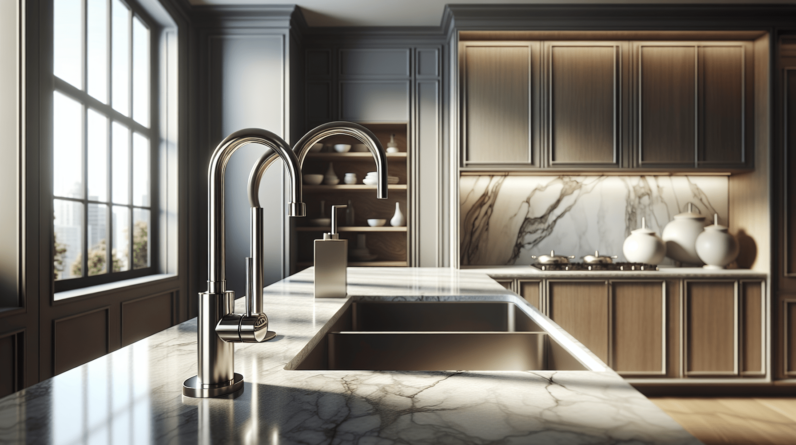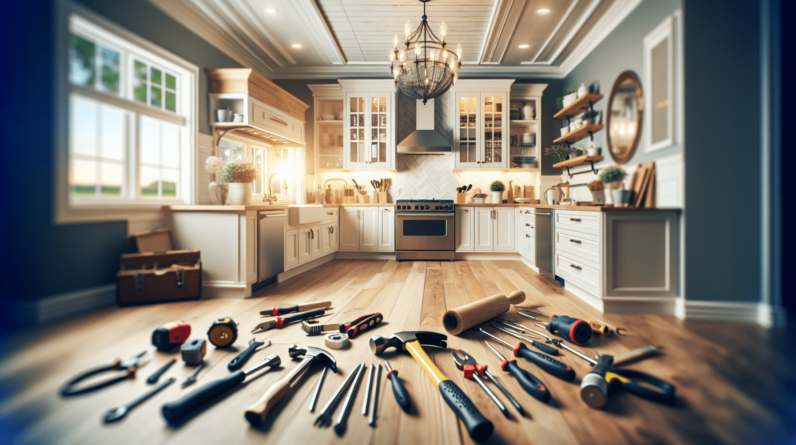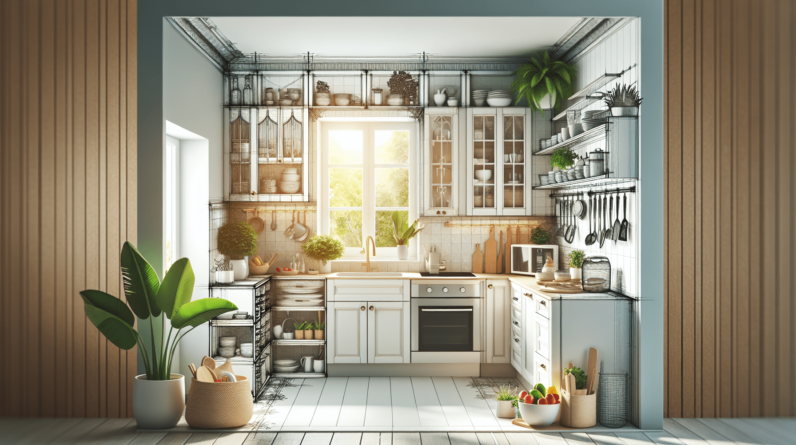

Have you ever thought about how the layout and design of your kitchen can significantly influence your cooking experience? In a small kitchen, every square inch matters, and with the right remodeling strategies, you can create a space that feels larger, more functional, and even more inviting. Let’s explore the ins and outs of small kitchen remodeling, from design principles to practical tips.

Understanding Your Space
Assess Your Kitchen’s Layout
Before making any changes, take a moment to assess your current layout. Is it efficient for cooking, or do you find yourself frustrated by the lack of space?
A well-designed kitchen should have a functional work triangle, which is the optimal distance between the stove, sink, and refrigerator. When you evaluate your kitchen, consider how you move through the space and what can be done to enhance your workflow.
Identify Your Needs and Wants
It’s essential to identify what you truly need versus what you want in your kitchen. Do you require more storage, or would a larger countertop make cooking easier?
Make a list of must-haves and nice-to-haves. This will guide your remodeling decisions and help you prioritize when it comes to budget and design.
Set a Realistic Budget
When it comes to remodeling, staying within budget is crucial. While it’s easy to get carried away with ideas, knowing your financial limits will help you make informed choices.
Consider breaking down your budget into categories, such as cabinetry, appliances, and labor. This way, you can allocate funds effectively and keep track of expenses as you go along.
Design Principles for Small Kitchens
Maximizing Space
In a small kitchen, space maximization is key. One effective strategy is to use vertical storage options. Think tall cabinets, floating shelves, or even a combination of both.
Here’s a table that illustrates various storage options and their benefits:
| Storage Option | Benefits |
|---|---|
| Tall cabinets | Uses vertical space effectively, creating more storage. |
| Floating shelves | Adds open storage without taking up floor space. |
| Pull-out pantries | Offers easy access to items and maximizes corner spaces. |
| Under-cabinet shelves | Adds additional storage while freeing up counter space. |
Opt for Open Shelving
Open shelving can create an airy feeling in a small kitchen. By displaying attractive dishware or jars, you can make the space feel larger while maintaining functionality.
Remember to keep your shelves organized and minimal to avoid visual clutter. You may want to limit the number of items displayed to enhance the sense of space.
Choose the Right Colors
Color plays a significant role in how a small kitchen feels. Light colors can make your kitchen look more spacious and inviting.
Consider a palette of whites, light grays, or soft pastels. If you wish to add contrast, darker accents or a bold backsplash can add character without overwhelming the room.
Functional Layouts
Open Concept Designs
An open concept kitchen removes barriers between the kitchen and other living areas, making the space feel larger. If possible, consider knocking down a wall to integrate your kitchen with the dining or living space.
This also facilitates interaction when you have guests over, making entertaining more enjoyable.
L-Shaped Layout
An L-shaped kitchen layout works well in small spaces. It incorporates cabinets along two walls, leaving the center open for movement. This design can also create a natural flow, making cooking and socializing easier.
Galley Kitchen
A galley kitchen is another excellent option for small spaces. With cabinets and appliances lining two parallel walls, it utilizes every square inch efficiently.
U-Shaped Kitchen
If you have a bit more length to work with, a U-shaped kitchen can provide ample counter space and storage. This design allows for easy movement, with three sides dedicated to cooking and prepping.

Cabinets and Storage Solutions
Custom vs. Pre-Fabricated Cabinets
Choosing between custom and pre-fabricated cabinets can impact both your budget and the kitchen’s overall look.
Custom cabinets are tailored to your space and preferences but can be more expensive. Pre-fabricated cabinets are usually more affordable and can work well in standard layouts.
Incorporate Drawer Storage
Drawers can often be more efficient than traditional cabinets. They provide easier access to items and can be designed specifically for pots, pans, utensils, or even small appliances.
Here’s a brief comparison of cabinets versus drawers:
| Feature | Cabinets | Drawers |
|---|---|---|
| Accessibility | Items may be difficult to reach | Easier access to items |
| Organization | Requires stacking or shelves | Keeps everything orderly |
| Space Utilization | Can waste space if not fully utilized | Uses space more efficiently |
Add Pull-Out Organizers
Consider adding pull-out organizers in your cabinets. These can be a great way to store spices, cleaning supplies, or pantry items efficiently.
They help prevent clutter and make it easier to find what you need without rummaging.
Countertops and Flooring
Selecting the Right Countertop Material
Your countertop choice can dramatically affect the kitchen’s functionality and aesthetics. Materials like quartz, granite, or butcher block each have unique benefits.
For small kitchens, opting for lighter-colored materials can create an illusion of more space.
Flooring Considerations
When selecting flooring for your small kitchen, consider materials that can withstand high traffic and are easy to clean. Options like tile, vinyl, or laminate can provide durability and come in various styles.
Laying tiles on a diagonal can trick the eye into thinking the room is larger, which is a fun design trick in a small area.
Lighting Your Kitchen
Layered Lighting
In small kitchens, layering your lighting is crucial. A combination of ambient, task, and accent lighting can create a vibrant environment.
- Ambient Lighting: This is your primary light source, like ceiling fixtures or recessed lighting.
- Task Lighting: Focused lights over workspaces, such as under-cabinet lights, are perfect for preparing meals.
- Accent Lighting: Use this to highlight artwork or decorative features, giving your kitchen personality.
Natural Light
Maximizing natural light is another way to make a small space feel larger. If you have windows, keep window treatments light and airy, or even leave them bare, if privacy allows.
Consider reflective surfaces, such as glossy tiles or light-colored cabinets, to bounce light around the room.
Appliances and Fixtures
Choosing Space-Saving Appliances
When remodeling your small kitchen, select appliances that accommodate your limited space. Many brands offer compact versions of refrigerators, ranges, and dishwashers tailored for smaller kitchens.
Here’s a quick comparison of appliance types:
| Appliance Type | Space Requirements | Functionality |
|---|---|---|
| Conventional Range | Takes more space but ideal for larger cooking tasks | Versatile cooking |
| Slide-In Range | Fits flush with cabinetry | Clean, integrated look |
| Compact Dishwasher | Takes up less space, ideal for smaller families | Efficient cleaning |
Consider Fixtures’ Size and Design
Similarly, choose fixtures like sinks and faucets that complement your small kitchen. A single basin sink can save space while still providing enough functionality.
Opt for a pull-down faucet to maximize use and convenience in tight spaces.
Finishing Touches
Add Personal Style
Your kitchen should reflect your personality. Adding elements like colorful dish towels, unique drawer pulls, or art can bring charm and warmth to the space.
Utilize Decorative Storage
Think beyond functional storage and consider decorative options. Use attractive baskets or stylish jars to store items, keeping them accessible while contributing to the overall décor.
Install a Backsplash
A backsplash can serve as a focal point in your small kitchen. Choose a tile that adds color and texture, creating visual interest without overwhelming the area.
Conclusion: Bringing It All Together
Now that you have insights and strategies for small kitchen remodeling, it’s time to put your plan into action. Start with a clear vision of your dream kitchen and work through each element at your own pace.
Remember to enjoy the process! Remodeling is an opportunity to create a space that not only enhances your cooking experience but also becomes a place where memories are made. With careful planning, attention to detail, and a little creativity, your small kitchen can transform into a stylish and functional haven.
Happy remodeling!



